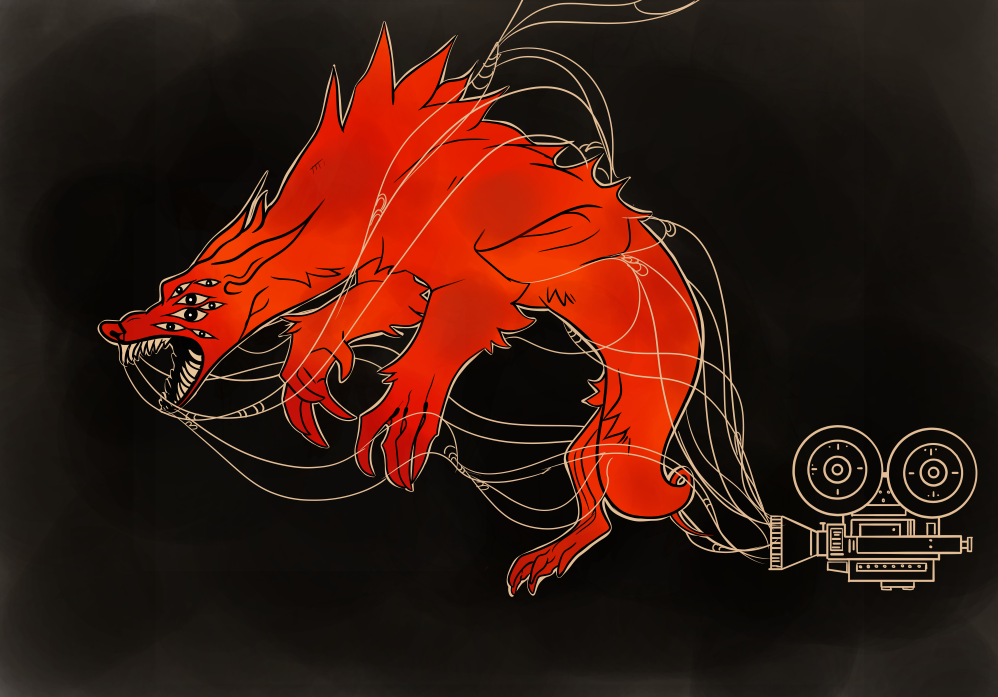The Quad: Jump scares are maligned as a horror crutch, but film history gives a fuller picture

(Michelle Fu/Daily Bruin)

By Ryan Wu
Feb. 18, 2019 8:41 p.m.
Life after a horror movie is an exercise in paranoia.
Grabbing a late night snack? Michael Myers is hiding in your pantry. Lying in bed checking your phone? Chucky’s lurking right underneath.
Recently, I saw Orion Pictures’ latest horror flick, a yarn about evil kids titled “The Prodigy,” at a late-night showing at Third Street Promenade, Santa Monica. The crowd was thin but energetic; they demanded more after every ridiculous twist and especially after every jump scare.
The film itself was petrifying. Never, since my babysitting days, has a screaming child caused me so much distress. On balance, reviewers conceded the film had some great, memorable jumps; but those jumps weren’t enough to save the film from a mixed reception.
Let’s face it: The jump scare – referring to a filmmaking technique where something jumps into frame to frighten the audience, usually accompanied by a loud noise – is the black sheep of horror filmmaking. Pioneered in movies like “Cat People” and “Psycho,” jump scares have since evolved into an integral part of the horror genre; YouTube is replete with compilations of cinema’s finest “boos,” while sites like “Where’s The Jump?” help prepare easily-shaken audience members for the scares as they come.
As integral as they’ve been to many films, jump scares have been the subject of pushback in recent years, with video essayists and newspaper reviewers alike deriding them as cheap and overused shock tactics.
It’s not difficult to see where they’re coming from – jump scares are often seen as a crutch for poorly made horror, delivering thrills when characters are weak. The list of the “jumpiest” films ever include such less-than-classics as “Scream 3” and “Silent Hill: Revelation.”
Modern re-evaluations, however can very easily tip into the opposite extreme – among some professional critics, jump scares are used as shorthand for uncreative horror-pablum. Some articles on filmmaking simply recommend they not be included at all.
It doesn’t feel fair to issue a blanket condemnation of jump scares without looking at why they’re used in the first place. To understand this, we have to look at the purpose they served when they were first developed.
One of the first jump scares in history is also probably one of the most famous: the shower murder in Alfred Hitchcock’s 1960 film “Psycho.” The erstwhile main character, Marion Crane, has just checked into a seedy motel. The audience knows the owner is a voyeur who spies on undressed women, and they know the owner’s mother is an overbearing nut. Danger threads its way through the peepholes and lattices of the Bates Motel long before Marion steps into the shower.
Then, it strikes. Janet Leigh and violins shriek in tandem as “mother” rips the shower curtain open and starts to stab. Hitchcock had originally planned the shower scene to be completely silent, but composer Bernard Herrmann convinced him to use the track he composed.
Hitchcock admitted the music helped intensify the scene, but he may not have known the underlying reason for this. Regardless, other popular films – such as “Wait Until Dark,” “The Innocents” and “Repulsion” – began mimicking the tactic for its intensity and shock value.
In 2011, researchers at UCLA’s department of ecology and evolutionary biology discovered that high-pitched sounds, much like Hermann’s score, naturally trigger the fear response in humans due to their resemblance to screaming. Like with many animals, screaming acts as a distress call and a signal of alarm, warning others away from danger.
In general, jump scares work by bypassing the rational part of the brain and activating the reflexive fear response. Researchers at the University of Wisconsin-Madison found that unexpected stimuli – such as a sudden noise – tended to cause greater change in heart and respiration rates in test subjects than something they anticipated.
In this way, the jump scare can be a lazy device. They’re shortcuts to the fear response without the need to painstakingly create sympathetic characters or a believable world. “Insidious” writer Leigh Whannell mentioned on a making-of featurette he had to be careful every jump scare affected the characters emotionally, and weren’t just false alarms. In an interview with the Verge, “Sinister” writer C. Robert Cargill said that without believable characters, jump scares and gory kills are more likely to elicit applause than apprehension.
Maybe that’s where a jump scare’s value lies – in being the downhill section of a roller coaster, generating screams and laughs in equal measure. At the same time, they can be a powerful tool for eliciting emotion from an audience. Some of the most iconic moments in horror – the twins in “The Shining,” the kitchen in “Halloween,” the shark in “Jaws,” the dinner conversation in “Insidious” – use jump scares to punctuate long sequences of dread. They’re used to create narrative intensity in the context of a broader film.
And in the end, maybe shortcuts to emotion have a value of their own. Hitchcock, while musing to “North by Northwest” screenwriter Ernest Lehman, imagined a day when filmmakers could directly manipulate the audience’s mood, no film necessary. “There’ll be electrodes implanted in (the audience’s) brains, and we’ll just press different buttons and they’ll go, ‘Ooooh’ and ‘Aaaah,’ and we’ll frighten them, and make them laugh. Won’t that be wonderful?”
Wonderful indeed – although my sleep schedule begs to differ.

